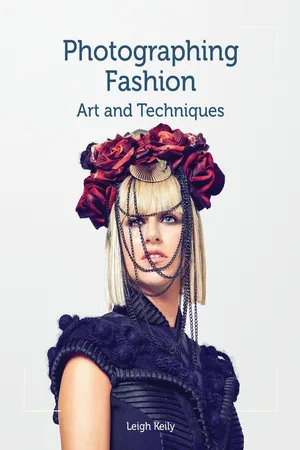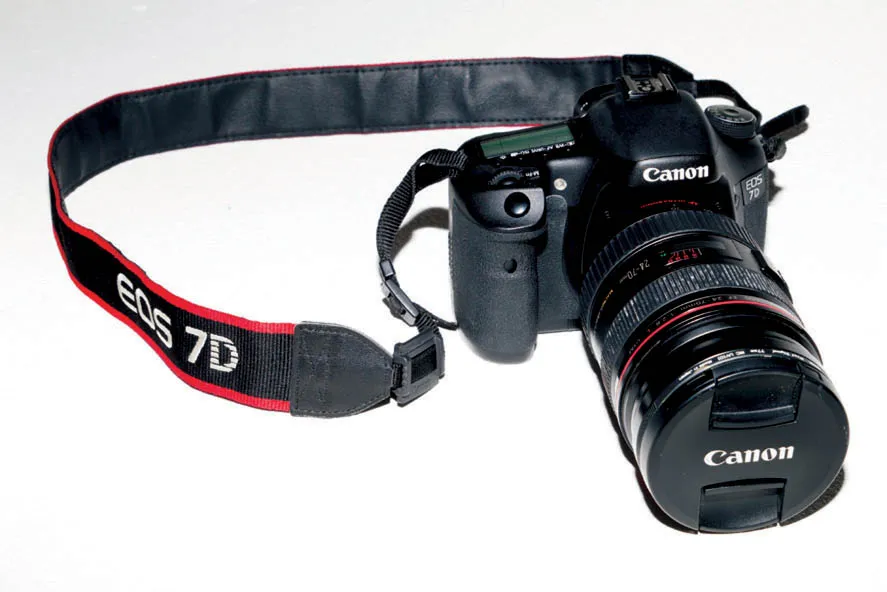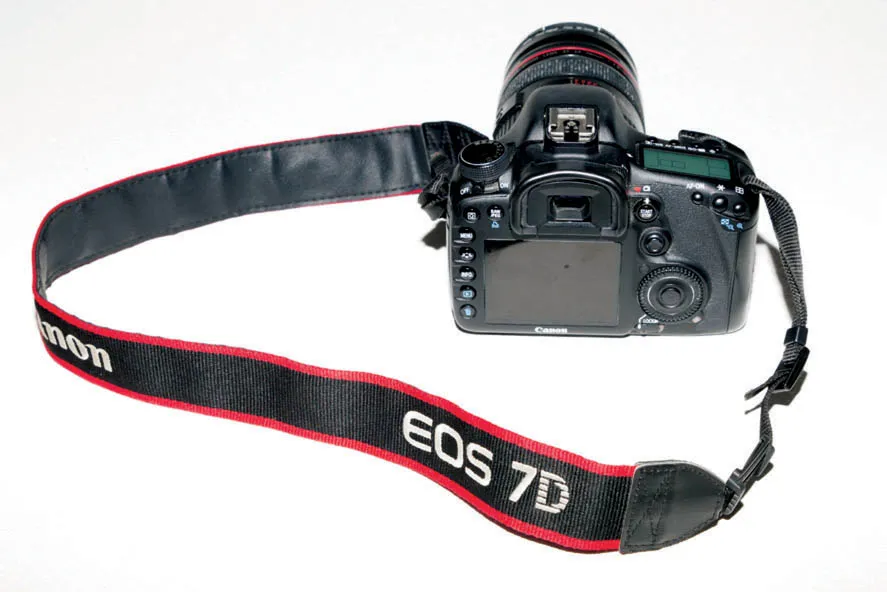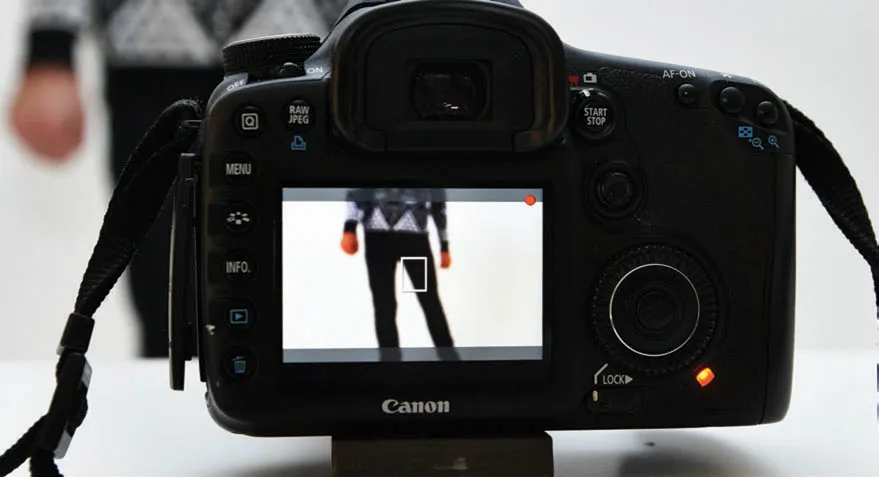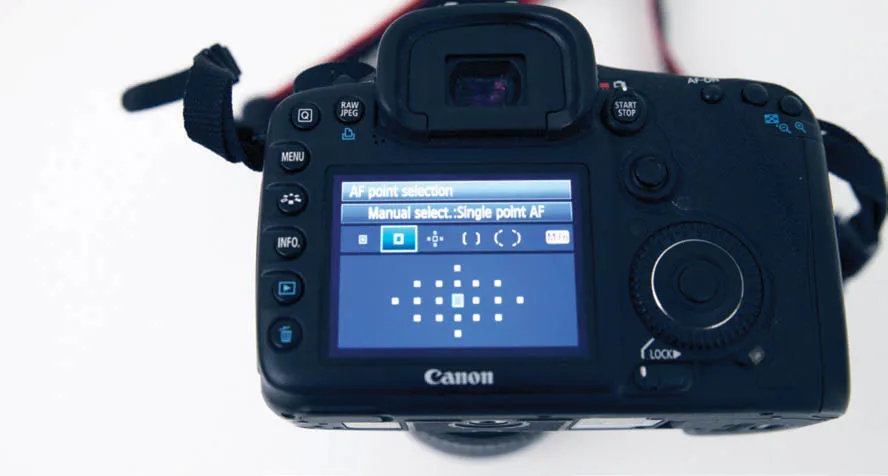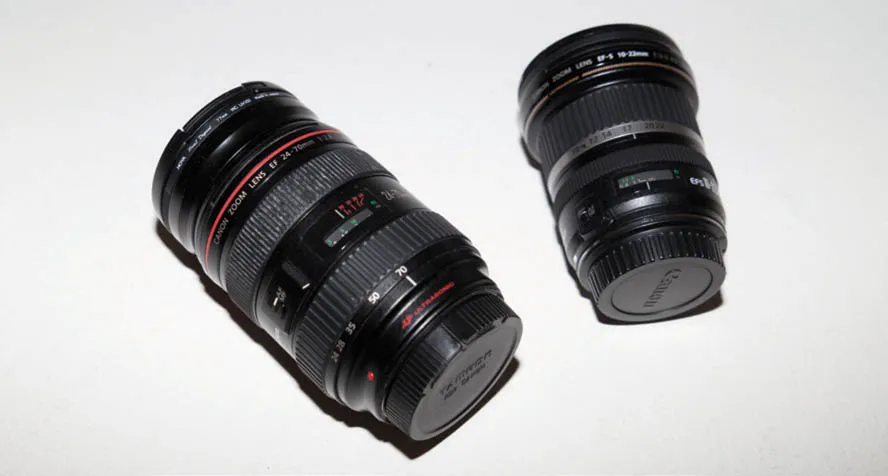![]()
Fig 1.1
Preparing the lighting for a busy fashion shoot.
Chapter 1
Basic Kit
CHOOSING A DSLR
The most obvious and essential part of the fashion photographer’s kit is the camera. Most fashion photographers are now working in the digital format, having abandoned film due to the fast turnaround, high quality and low cost of modern DSLRs – Digital Single Lens Reflex cameras – which contain a viewfinder which shows you exactly what you’re going to shoot, with a mirror that pops out of the way when you press the shutter. Choosing your camera might seem like a daunting task, so we’ll cover some basic terminology to help make that decision a little easier.
Brand
Canon and Nikon are the traditional choices for 35mm format DSLR cameras, but other contenders like Sony, Fuji and Olympus are producing cameras of similar specifications and features. Canon and Nikon provide safe choices and strong compatibility with third party accessories, a larger range of branded products, easy servicing and ease of hiring additional lenses and flash guns.
Megapixels
The megapixel count refers to the multiplication of the length and width of a digital image. In practical applications, a higher megapixel size allows you to blow up a print to larger dimensions. It also produces a higher RAW image size, so memory cards become fuller, faster. It is generally desirable to have as big a megapixel count as you can afford, though there are many other factors which also determine image quality – for example, an iPhone 8-megapixel camera is no match for a digital SLR.
Sensor Size
There are currently two sizes of sensor being used in modern DSLRs: an APS-C-size senor and a full frame. APS-C has a smaller physical size and is cheaper to produce, making it quite a common sensor in consumer-level digital cameras. Sensor sizes can vary by camera manufacturer, but due to their smaller size they produce a different ‘angle of view’ from the lens’s focal length. This ‘crop factor’ or ‘focal length multiplier’ normally multiplies regular lenses by a factor of around 1.5.
Professional cameras typically use the full frame-size sensor, which is larger than the APS-C and mirrors the dimensions of traditional 35mm film. As such it has a higher light sensitivity and no focal multiplication.
Capture Rate
The capture rate is the speed at which a camera can capture JPEG and RAW files, usually expressed as a number of images in a burst (quick succession) or the number of frames per second for continuous shooting.
Processor
Responsible for the clarity and the speed of the capture, the processing power is typically higher in the professional camera ranges; however, the consumer range carries processors far in excess of the demands of most novice fashion photographers. Modern cameras give clean captures at ISO settings under 800, with some noticeable digital grain sneaking in above ISO 800. With most fashion work being captured at a relatively slow speed (in comparison to, for instance, sports photography), there is little need for a processor with a high capture rate.
Figs 1.2 and 1.3
A standard Canon DSRL.
Memory card type
Two main memory card formats dominate the market – the smaller SD (secure digital) cards and the slightly larger, squarer CF (compact flash) cards. The SD cards are generally priced lower than the CF, but also have a lower maximum read/write rate. It is essential that a photographer carry multiple memory cards and an ability to back up these cards to an external source.
Fig. 1.4
Left and middle: compact flash cards. Right: SD card.
ISO performance
As digital cameras evolve, they usually boast better ‘low light shooting’; that is, they produce cleaner images at high ISO, which allows better night shooting and indoor shoots. Fashion photographers fond of using available light (pre-existing light, like wall and ceiling lamps indoors) will prefer this cleaner, low light shooting technology.
Video
With full HD capture now available on DSLRs, the fashion photographer can branch into video without investing in a separate HD video kit. 1080p capture comes standard on most mid-level DSLRs, allowing use of expensive still photography lenses to be applied to video work. Photographers hoping to branch out into some digital fashion film should consider this when purchasing a DSLR.
Fig. 1.5
A DSLR in video mode.
AF points and metering
AF (autofocus) points help the camera to assess your intended focus for the image by analyzing the contents of the frame and choosing a corresponding AF point. So, the more, the better. However, no AF sensor can read your mind, so being confident and switching to manual focus where needed will give you better results than relying on a handful of AF points. Exposure metering also varies from camera to camera, and advanced systems will assist fashion photographers working heavily on location with quicker, more accurate scene exposure.
Fig. 1.6
Autofocus points shown on the back of a DSLR.
LENSES
Lenses for DSLRs are always removable and hence customizable, depending on what type of shoot you intend to produce. For fashion photography, we choose lenses which reflect our subject – people. Wide-angle lenses like the ‘fish-eye’ can be used to give a special effect, but aren’t a common everyday lens for the fashion photographer. Like portrait photographers, fashion photographers are aiming to buy lenses that flatter their subjects, not warp them.
Wide or telephoto?
Wide-angle lenses (i.e. in the range of 15–35) are fantastic for capturing landscapes but less than ideal in the fashion arena. When photographing people with a wide angle, noses can seem larger and more prominent, the subject may appear out of proportion, or wider than anticipated. Studio backgrounds might become visible, and a less than ideal image is produced. Telephoto lenses, at 70–200, will produce a cleaner, more proportioned fashion image but require photographers to have more distance between themselves and the subject.
Prime or zoom?
Both prime (fixed focal length) and zoom lenses have their pros and cons. Fixed lenses, as the name implies, fixes the focal length and therefore the operator cannot zoom in or out, instead stepping forward or backward to include more or less content in the frame. As fixed lenses have fewer moving parts and are tailor-made for a specific focal length, the internal glass lenses known as the ‘optics’ can be manufactured to a higher specification than those in zoom lenses. Prime lenses are favoured by professional photographers who rely on this level of quality in their images. Prime lenses often have a wider maximum aperture, allowing plenty of light into the lens and a shallow depth of field – perfect for blurring the background of an image.
Zoom lenses are made to be more dynamic and will often work on a range specific to their application. Fashion photographers will be aiming for the lower (28–105mm) range, while sports photographers may need to zoom in a great distance to capture the action, hence their zoom lenses will have larger focal lengths.
Fig. 1.7
A wide-angle lens and a zoom lens.
Quality
Both prime and zoom lenses come in various levels of quality, almost always related directly to their cost. Lower quality lenses will often perform very well in the mid to high aperture range, i.e. above ƒ8, but may incorporate softness, blur or vignetting (darkening of edges) at lower end ƒ–stops. Due to their high quality materials and craftsmanship, premium lenses hold their value well, much more solidly than camera bodies or other technology indexed products.
SUGGESTED STARTING POINTS
Start your kit with a solid yet affordable SLR body from one of the main manufacturers, and invest the bulk of your start-up capital into one or two top quality lenses. Should you wish to upgrade later, your lenses will be transferable and your first SLR can be used as a back-up or snapshot camera. Great starting lenses are a 50mm prime lens and a 24–105mm zoom. Add two or three high capacity memory cards.
TRIPOD
A tall tripod is an essential part of the fashion photographer’s kit, not only to keep well composed shots stable, but also to help bear the weight of heavy SLR camera and lens combos, whi...
